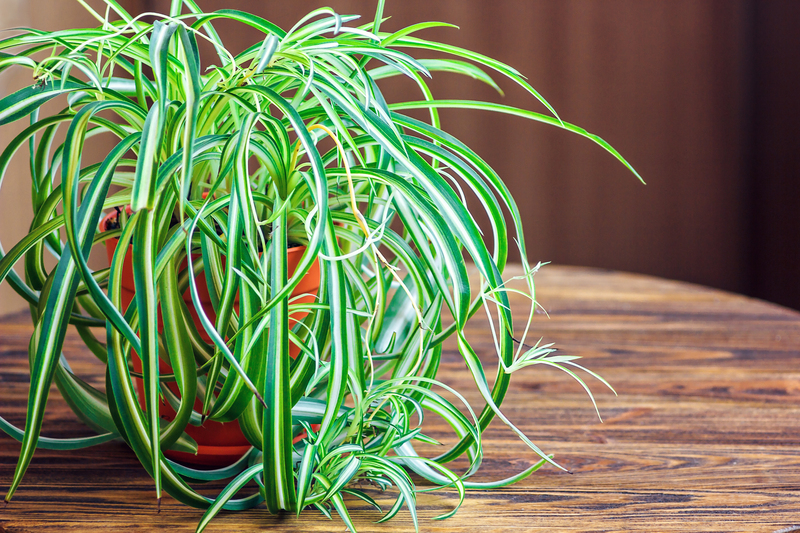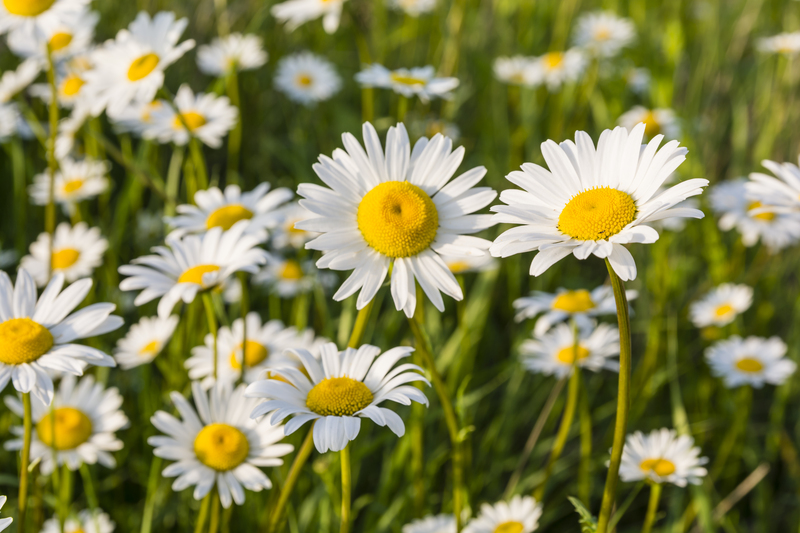Orchid Enchantment: How to Keep Them Flourishing
Posted on 17/09/2025
Orchid Enchantment: How to Keep Them Flourishing
Orchids have captivated plant lovers for centuries with their exotic beauty, diverse shapes, and stunning colors. Yet, despite their enchanting appeal, many growers find orchid care mystifying and even intimidating. But with the right information, anyone can transform their home into an orchid haven full of thriving, vibrant blooms. In this comprehensive guide, we explore how to keep orchids flourishing, so you can unlock their magical allure and enjoy healthy flowers year-round.
Understanding Orchids: The Basics
Before diving into the care requirements, it's vital to understand what makes the orchid family unique. With over 25,000 species and more than 100,000 hybrids, orchids exhibit incredible variety. However, most commonly kept orchids, such as Phalaenopsis (moth orchids), Dendrobium, and Cattleya share similar fundamental needs.
- Epiphytic Nature: Most orchids grow on trees in their natural habitat, with roots exposed to air and rain, not soil.
- Light Requirements: Unlike many houseplants, orchids need precise lighting to thrive but not direct midday sun.
- Specialized Roots: Orchid roots absorb both moisture and nutrients from the air, making their care quite different from traditional potted plants.

The Essentials of Orchid Flourishing: Care Secrets Unveiled
1. Choose the Right Orchid Variety
Not all orchids are created equal. For beginners enchanted by orchids, Phalaenopsis or "moth orchids" are an excellent starting point; they are resilient and adaptable to indoor environments. Other species might require more tailored conditions. Research each variety's requirements for optimal results and flourishing blooms.
2. Mastering Lighting for Orchid Success
Orchid lighting is one of the most crucial aspects of their care. Since most orchids are rainforest natives accustomed to dappled sunlight, direct sun can scorch their leaves, while insufficient light will halt blooming.
- Moth orchids: Prefer bright, indirect light (an east or north-facing window is ideal).
- Cattleya and Dendrobium: Thrive in slightly more light, like filtered southern or western exposure.
Monitor leaf color for guidance: Healthy orchid leaves should be a light, grassy green rather than dark or yellowish. Insufficient light stunts flower production, while too much causes leaves to yellow or develop spots.
3. Crafting the Perfect Orchid Watering Routine
Overwatering is the number one cause of orchid demise. Orchids are not typical potted plants; their roots need moisture yet require plenty of air to prevent rot. Here's how to water orchids for flourishing growth:
- Check before watering: Gently insert a finger or wooden stick into the potting medium. Only water if it feels dry an inch below the surface.
- Frequency: Typically, water every 7-10 days, adjusting based on temperature and humidity.
- Watering method: Water orchids thoroughly, allowing excess to drain completely. Never let them sit in water.
- Ideal water: Use room-temperature rainwater, distilled, or filtered water for best results. Hard tap water can harm sensitive roots over time.
Tip: If in doubt, it's better to under-water than over-water. Signs of overwatering include limp, yellowing leaves and mushy roots. Underwatering typically causes wrinkled or shriveled leaves.
4. The Art of Orchid Humidity and Airflow
Orchids flourish in environments with moderate to high humidity--ideally between 40-70%. Dry indoor air, especially during winter, can stunt growth and prevent blooming.
- Humidity trays: Place a shallow tray with pebbles and water beneath your orchid's pot to raise moisture levels.
- Grouping: Cluster orchids together to naturally increase local humidity.
- Misting: Lightly mist the air (not the foliage) in the morning for an extra boost.
Combine humidity with gentle air movement by using a small fan in the room. Stagnant air encourages pests and fungal diseases, while good circulation mimics orchids' breezy forest homes.
5. The Right Potting Mix and Repotting Strategies
Orchid enchantment lies partially in their unique roots. Ordinary soil suffocates orchids, so they require a special orchid mix--usually composed of bark, perlite, sphagnum moss, and charcoal.
- Why change the mix? Orchids need to be repotted every 1-2 years as the mix breaks down or the plant outgrows its container.
- Choose the right pot: Opt for pots with good drainage and adequate airflow; clear pots help you monitor root health.
- Repotting tips: Gently remove the old mix, trim any dead roots, and place the orchid at the same depth in fresh mix. Water lightly and avoid feeding for 2 weeks after repotting.
Note: Never pot an orchid too deeply; most roots prefer to be close to the surface and exposed to light and air.
Feeding Orchids for Vigorous Growth
Just like their other needs, orchid feeding is specialized. Too much or too little fertilizer can harm orchids, but the right balance encourages abundant blooms.
Fertilizer Basics
- Orchid-specific food: Use a balanced, water-soluble orchid fertilizer (such as 20-20-20) formulated with micronutrients.
- Frequency: Fertilize "weakly, weekly"--that is, use a half-strength solution every time you water during active growth (spring and summer), and every third or fourth watering during dormancy or in winter.
- Flush salts: Once a month, flush the potting medium with plain water to remove accumulated mineral salts.
Orchid Blooming: Unlocking Their Flowering Potential
The real magic of orchid culture is in getting your plants to rebloom year after year. Many people mistakenly believe orchids are throwaways after the initial blooms fade, but with proper care, these remarkable plants will enchant you with flowers again and again.
Key Secrets to Reblooming Orchids
- Consistent Temperature Cycles: Many orchids require a subtle drop in night temperatures (about 10?F lower than day) to trigger blooming. Try placing your orchid near a window with cooler night air in autumn for several weeks.
- Right Light Intensity: Ensure your plants are getting enough light. If not, move them closer to a window or supplement with a grow light.
- Fertilizer Timing: Fertilize regularly during the growing season, but reduce feeding as buds start to develop.
- Rest Period: Some orchids, like Dendrobium, need a rest period with less water and no fertilizer after flowering to reset for the next bloom cycle.
Common Orchid Problems and Their Solutions
Even with the best care, orchid growers occasionally encounter challenges. Here are the most frequent issues that can prevent orchids from flourishing--and how to solve them:
1. Yellow Leaves
- Possible causes: Overwatering, too much sun, or natural leaf aging.
- Solutions: Check roots for rot, adjust light or water, and trim away truly dead or yellowing leaves.
2. Wilting or Dropping Flowers
- Possible causes: Rapid environmental changes, such as drafty window, sudden temperature shifts, or dehydration.
- Solutions: Stabilize orchid's environment and ensure consistent care.
3. Root Rot
- Possible causes: Standing water, poor drainage, or compact potting mix.
- Solutions: Repot in fresh orchid mix, trim mushy roots, and adjust watering habits.
4. Pests and Diseases
Common orchid pests include aphids, mealybugs, and spider mites. At first sign of infestation, isolate your plant and treat with insecticidal soap or neem oil. Keep leaves clean and dry to prevent bacterial or fungal disease.
Orchid Myths Debunked
There are many misconceptions about orchids that can discourage would-be enthusiasts.
Let's clarify some common myths:
- Myth: Orchids are too difficult for beginners.
Reality: Many varieties are surprisingly adaptable and can thrive with simple care routines. - Myth: Orchids need to be watered with ice cubes.
Reality: Orchid roots dislike cold; always use room-temperature water. - Myth: Orchids only bloom once, then die.
Reality: With the right care, they will rebloom for years!
Styling and Displaying Orchids
Part of orchid enchantment is in how you display these stunning plants. Take your enjoyment to the next level by styling with their natural habitat in mind:
- Group different varieties for a lush, tropical feel.
- Choose attractive pots that accentuate the foliage and flowers.
- Use hanging baskets or mount orchids on driftwood to mimic their wild growth.
Place your orchids where you can admire them daily--kitchens, bathrooms, and bright living rooms are all suitable as long as requirements are met.
Long-term Orchid Enchantment: Advanced Tips
Once basic care is mastered, experiment with gentle orchid propagation (such as division) or expand your collection with new species. Join online forums and local societies to share tips, learn from other enthusiasts, and truly immerse yourself in the world of orchids.
Famous Orchid Varieties for Home Growers
- Phalaenopsis (Moth Orchid): Long-lasting blooms, easy care, and available in many colors.
- Dendrobium: Spectacular sprays of blossoms; some prefer higher light.
- Cattleya: Known as the "Queen of Orchids," with large, fragrant flowers.
- Oncidium: "Dancing lady" orchids thrive with good light and humidity.
- Vanda: Enjoys full sun and requires daily watering but rewards with eye-catching blooms.

Frequently Asked Questions
- How long do orchids live?
With proper care, many orchids flourish for decades, long outlasting many traditional houseplants. - Do orchids clean the air?
Yes, orchids contribute to indoor air quality by absorbing toxins and releasing oxygen. - How do I know if my orchid needs repotting?
Roots escaping the pot, compacted growing medium, or waning vigor are signs it's time to repot. - Why aren't my orchids blooming?
Often due to insufficient light, lack of temperature variation, or fertilization issues. Review care routine for adjustments.
Unlock your Orchid Enchantment Today!
Caring for orchids is not a secret art, but an enchanting journey. By understanding their unique nature and providing the right environment, light, water, and nutrition, anyone can keep orchids healthy and continually in bloom. These tips will help your orchids flourish, filling your home with beauty and a touch of the extraordinary. Embrace the enchantment and let your orchid adventure flower!
Ready to start your orchid journey? Bring home an orchid today, use these flourishing tips, and witness their magical blooms season after season. For more in-depth advice and inspiration, explore reputable orchid societies, online resources, and consult with local experts. Soon, you'll master the art of orchid enchantment--one leaf and blossom at a time!

